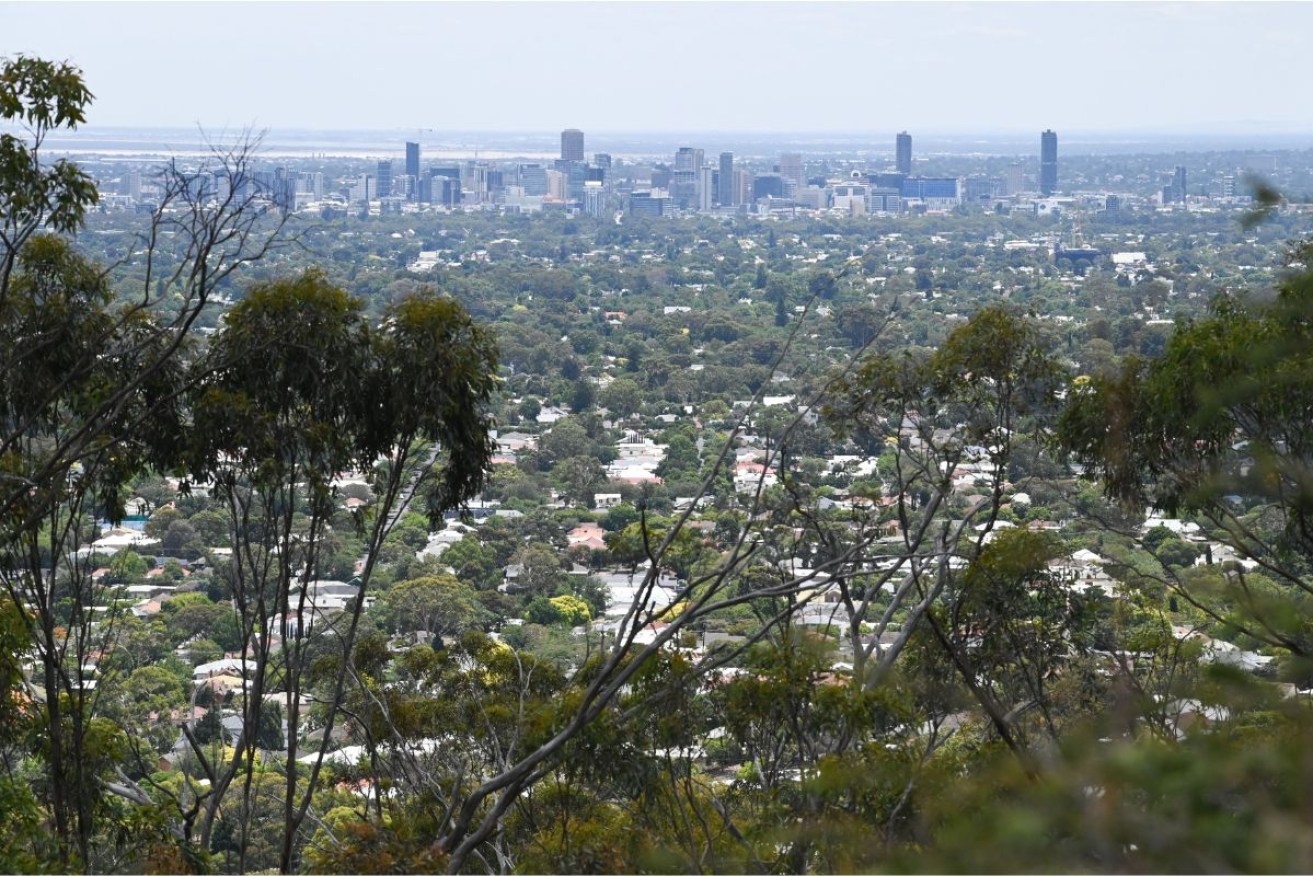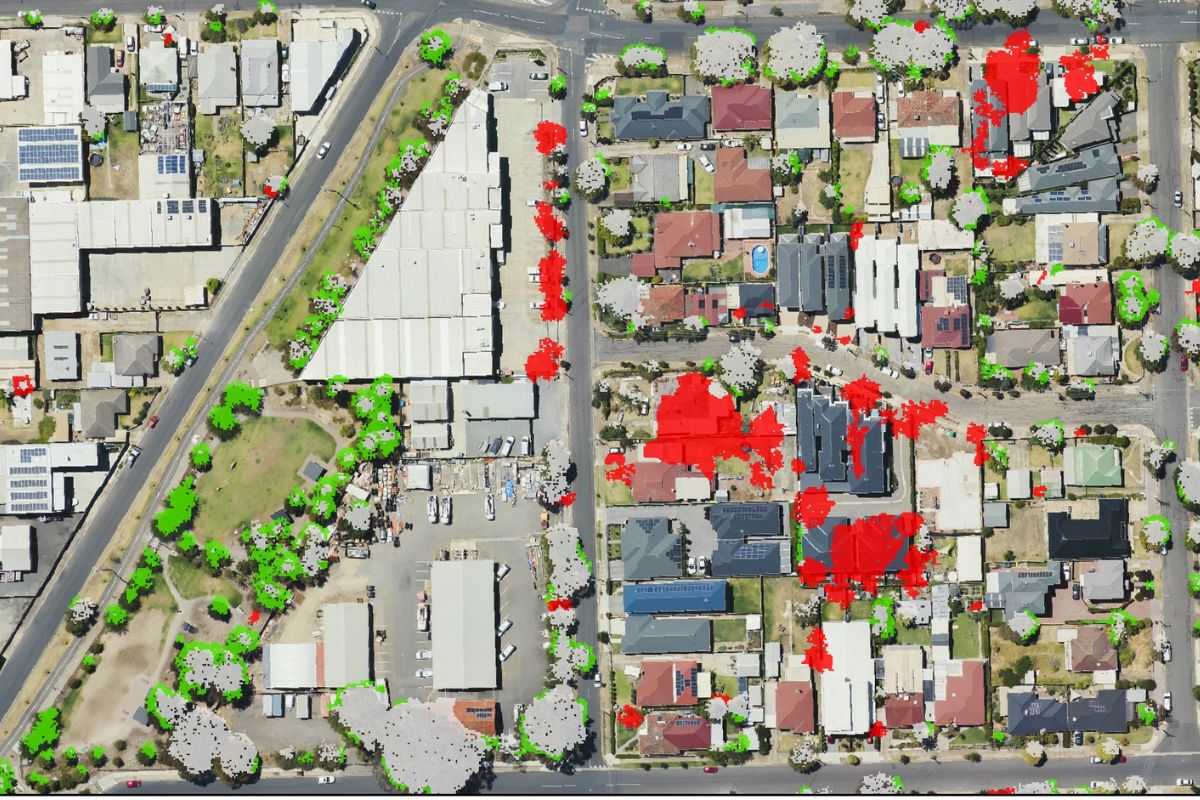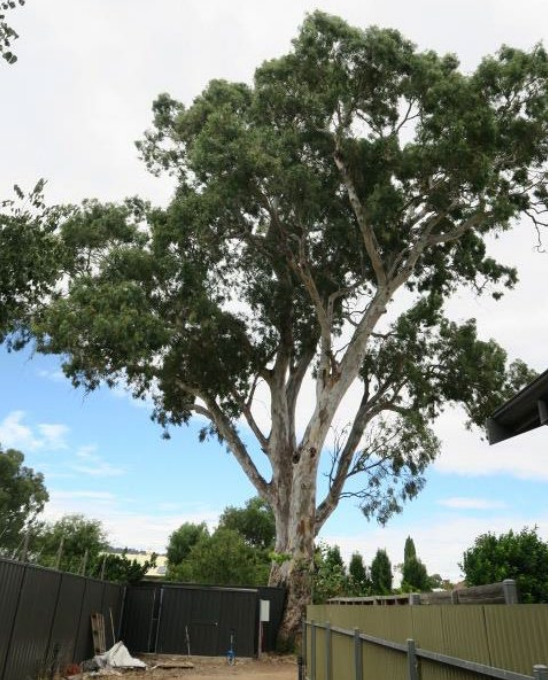Adelaide left in the shade over tree canopy goal
Data released by Green Adelaide today shows metropolitan Adelaide falls well short of tree canopy targets, with tree removal in residential areas and large roads causing heat islands.


Adelaide's cityscape. This picture: Green Adelaide
About 17 per cent of metropolitan Adelaide – spanning Adelaide and the full extent of the city of Onkaparinga and Gawler – is covered in tree canopy, according to Green Adelaide.
The urban tree canopy, green spaces and built environment data released today captured a regionally consistent and full view of tree canopy in 2022. It’s the first study of its kind that does so, with state and local government collaboration.
The data will inform the state’s upcoming urban greening strategy, allowing councils and state government stakeholders to make well-informed decisions about tree canopy to increase Adelaide’s climate resilience.
Green Adelaide Presiding Member Chris Daniels told InDaily the widely accepted target for urban areas was 30 per cent and that Adelaide didn’t have enough tree coverage.
“We can be disappointed that it’s 17 per cent, but we can view that as an absolute challenge to get towards the 30 per cent and we know that if you plant, it works,” Daniels said.
He said tree canopies mean a lot to city residents as they were important for cooling, improving local microclimates, slowing wind, supporting biodiversity and reducing air pollution.
“You do need that shading effect over roads, over rooftops, even over people’s backyards, because it makes a lot of difference when you have those really hot days,” Daniels said.
He said that houses with rooftop to rooftop connections and not enough green between black roofs create “heat islands”.
“They will be very hot places, we can’t continue to build like that,” he said.
“So how do we build more effectively? How do we plan for these communities to have green in them?”

Tree canopy gain is shown in green, and loss is shown in red. This picture: Green Adelaide
The data shows between 2018–2019 and 2022, 2,959,211 square metres of changed canopy due to tree removal took place, with 1,599,908 square metres of tree removal occurring in residential areas.
Residential tree removal is often done for new housing, or along some major arterial roads with infrastructure upgrades. Tree removal has also been done for safety concerns.
Last week, for example, a Mitcham resident requested the removal of a significant River Red Gum with a trunk circumference of over five metres, which was on a boundary fence.
The resident requested removal due to safety concerns from fallen branches as the tree had structural flaws caused by termites and borers.
The Mitcham Council assessment panel rejected the request on April 4 as extensive assessments by arborists determined the tree was safe to remain, subject to pruning.
But agenda notes prepared for the council’s assessment panel said a replacement planting plan must be in place if the tree were to be removed, detailing how the replacement trees will be planted and nurtured.

The river red gum a Mitcham resident wants removed from their boundary fence. This picture: Mitcham Council
The Green Adelaide data shows tree planting by square metre was less than tree removal, with 1,268,988 square metres of tree planting taking place between 2019 and 2022. The replacement trees will also start small and need time to develop into significant ones.
“Across the city, trees that have been planted over the last five to 10 years are growing, we have also had a couple of lovely summers, so we haven’t had them burnt off… and that’s that’s a good thing that they tend to be smaller trees,” Daniels said.
He pointed to the canopy changes to tree growth, indicating that the 28,135,841 square metres of growth indicate tree canopy is a “dynamic” system.
“You’ve got this tree loss, and those trees might well be the big ones…at the same time councils and others are planting as much as they can on their space, in their parks, along their the streets that they have control over and so that leads to what appears to be positive,” he said.
“We’ve got to be very careful over time too that we aren’t seeing possibly a really good outcome now, but eventually that might tap out unless we find better ways to deal with residential, with commercial, with industrial… there’s these challenges.”
While the data provides both an overall picture and a council-by-council snapshot of canopy, Daniels said each council area was unique, with different soils and differing environments and no one-size-fits-all solution.
Another challenge to councils was the large price tag that comes with tree planting strategies, as highlighted in the Adelaide City Council’s recent budget talks.
The City of Adelaide administration flagged tree planting possibly costing $20,000 per tree due to challenges with underground infrastructure.
Daniels said Adelaide City Council was not the only one facing the challenge, which highlighted the importance of collaboration, not just among local and state government, but with other relevant stakeholders.
“We’ve all driven along roads that are, bumpety bumpety because tree roots have lifted up the the surface and so forth,” he said.
“It’s very important that tree selection and tree placement is done in concert with SA Power networks, SA Water… gas mains and all those sorts of things.”
The Urban Greening Strategy is due to be released for public consultation later in 2024.
“It’s something I’m incredibly proud of… it’s incredibly new for us to do this in this way to start off with full, clear benchmarking, and then to have a detailed strategy to follow from that, developed in concert with local government, state government and other end users,” Daniels said.
“Understanding trees to me is as important as learning to swim for a community.
“We have to value them, we know there are different styles of swimming and different types and different waters.
“Trees are like that… we will need to understand how important they are for ourselves, for our community and for the environment.”




